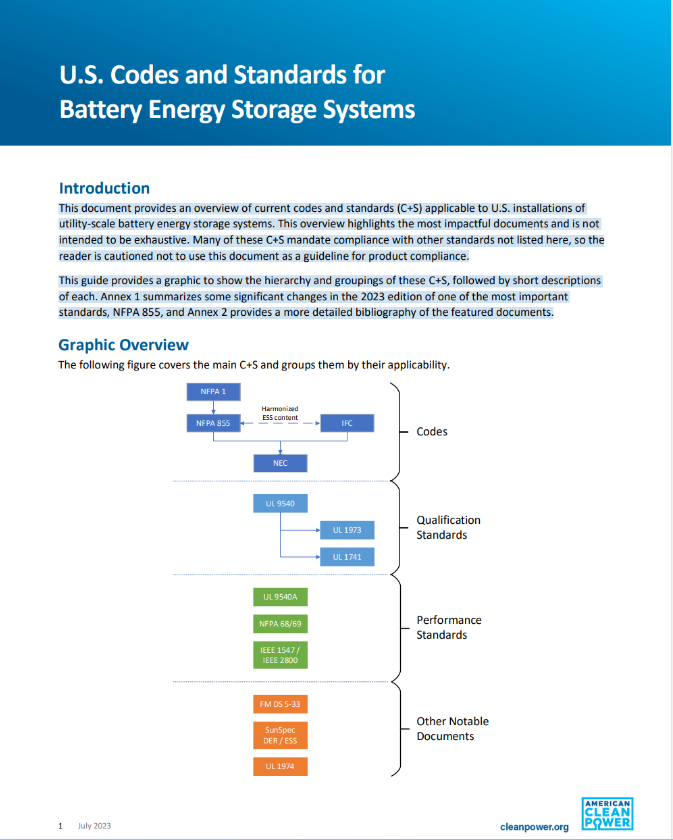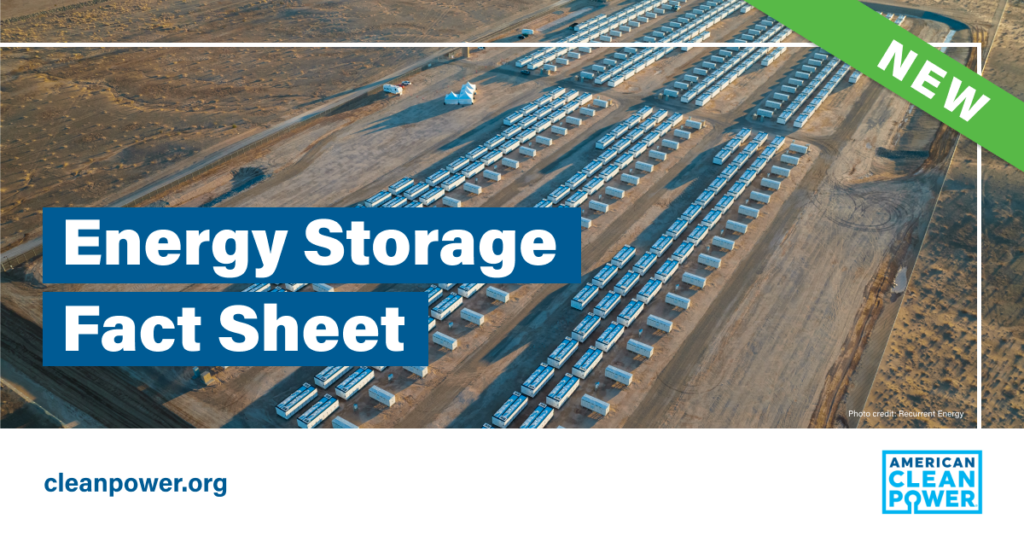This document provides guidance to first responders for incidents involving energy storage systems (ESS).
The guidance is specific to ESS with lithium-ion (Li-ion) batteries, but some elements may apply to other technologies also. For the purposes of this guide, a facility is assumed to be subject to the 2023 revision of NFPA 855 [B8]1 and to have a battery housed in a number of outdoor enclosures with total energy exceeding 600 kWh, thus triggering requirements for a hazard mitigation analysis (HMA), fire and explosion testing in accordance with UL 9540A [B14], emergency planning, and annual training. (The 2021 International Fire Code (IFC) [B2] has language that has been largely harmonized with NFPA 855, so the requirements are similar.)
This guide provides recommendations for pre-incident planning and incident response. Additional tutorial content is provided for each of the hazard categories. The Bibliography provides references to applicable codes and standards, and other documents of interest.
Join American Clean Power
Elevate Your Business with Insider Access:
- Policy Direction: Your voice in critical industry discussions.
- Exclusive Networking: Learn directly from key players in clean energy.
- Insider Information: First-hand access to policy insights and premier events.
- Advanced Tools: Our proprietary data at your fingertips to drive growth.
Act now to become a defining part of clean energy’s future.
Stay informed
Subscribe to American Clean Power and receive the latest clean energy news, policy updates, and opportunities to get involved.





